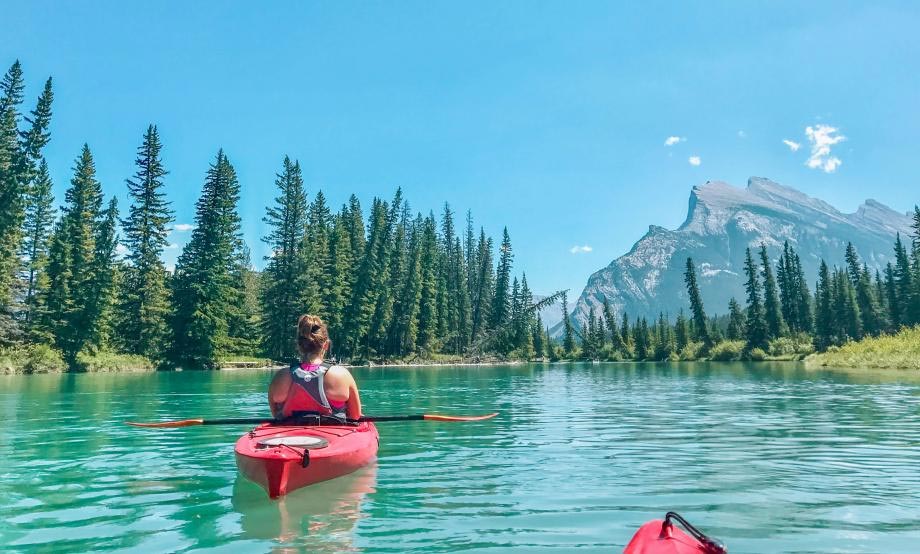Alberta’s lakes and rivers are a fantastic place to getaway with your family and enjoy the sunny summer weather. And, there are plenty of ways to make sure that your outing in a pleasure craft or canoeing adventure is safe for everyone involved.
In our last blog we went through the importance of boating operator cards and what safety items you should have with you in your boat. This month, we will dive into the second part of our boating safety series. Ahead are a few key items you should think about before you put your boat in the water and some safety tips while you are out enjoying some boating fun.
BEFORE YOU GO
Inspect your boat
Before you take your boat out on the water, make sure you take a few minutes to look it over. This checklist will help you with everything from a small kayak to a large fishing boat. Whether you own, rent or borrow a boat, it’s a good idea to look at the following items:
- Check the hull for cracks or other damage.
- For a motorized boat, check the oil, engine and electrical system. Make sure the throttle and steering work well, and make sure that you have fuel.
- Make sure the drainage plug is in place.
- Make sure you have all of your safety items. For a full list of what to pack,
- Make sure the load on your boat (gear and people) is well distributed.
Courtesy checks
If you would like someone with more experience to perform a safety inspection on your boat, Transport Canada works with various boating safety organizations, like the Canadian Power and Sail Squadrons, to offer free courtesy checks.
When you get a courtesy check, a trained boating safety volunteer boards your boat — while it is parked safely at a dock or at a boat ramp — to check your safety equipment. They will identify any problems that they see with your equipment or boat and discuss boating safety issues with you. This is a great opportunity to learn more about your specific boat and the safety risks involved with boating. Check the Canadian Power and Sail Squadrons website for more information on the Pleasure Craft Courtesy Check Program.
Make a Safety Plan
There's one more step before you go out on the water. You should make a plan that outlines some of the key parts of your trip and the people who are going with you. Before you go travelling—even if you are only going for an hour or two, jot down the following information:
- Where you are boating. This should include as much detail as possible, such as the lake or river system you are visiting and where you plan to launch your boat. Many of Alberta’s lakes are quite large and will have several entry points. Note as closely as possible the location you plan to enter the water.
- Where you plan to go. Do you plan to stay in the same general region and pull your boat out the same place you came in? Or, are you traveling down the river and ending your trip in a new location? Write down your intended route with as much detail as possible.
- Who is going. Write down the names and ages of all of the people who will be boating with you.
- Describe your boat. Note whether you are planning to be in a pleasure craft, a kayak or a paddle board. Again, be as descriptive as possible. If you know the registration number or model, write it down. Even if you only know the colour, writing down, “blue canoe” is better than nothing.
- Your timeframe. Write down whether you plan to be on the water for 30 minutes or 8 hours, and when you think you will be home.
Now that you have all of that information noted, send it to someone you trust. Make sure that someone knows your plans before you head out, and check in with them when you return to shore. This plan is important because if something happens to you and your loved ones, or if you get a little off course, there will be someone who will know when to call for help and where to send any search and rescue crews.
While this might seem like a lot of information, a safety plan can be as easy as texting a loved one something like this:
“Hi Monica, Eric (45), Walter (7) and I (41) will all be kayaking at Barrier Lake on Tuesday. Wanted to send someone our trip plan: We will be starting and ending on the Eastern shore. Starting at 9:30 am and we will be home by 3:00 pm. We will be using our blue touring kayaks, and Walt will be in a red kids kayak. I’ll check in with you when we get home. If you don’t hear from us, please check in with us. If you can’t get contact us, please call for help. Thanks!”
Monitor the weather
Weather and water conditions play a big role in your safety on the water. Before heading out, make sure you get the latest forecast for your area and that you understand what it means. Summer thunderstorms can strike quickly and without warning, so keep your eye on the sky when you are out on the water. If it starts to look dark and cloudy, and conditions are changing quickly, head for shore.
WHILE YOU ARE ON THE WATER
Now that you have all of your safety items packed and you have inspected the boat, it is time to enjoy the water. Since you have done so much preparation in advance, you can now enjoy the waves with your loved ones. Here are a few final tips to keep yourself and others safe:
- Stay away from swimming areas – even canoes and kayaks can injure swimmers.
- Avoid boating too close to shore. The shore line may change quickly and you could hit rocks or debris that you can't see from above the waterline.
- Be aware. Make sure you are paying attention to what is going on around you, and that you note where the other boaters, swimmers and animals are on the lake. This also includes keeping an eye on the skies for any changes in weather or cloud systems.
- Divers. If you see a divers flag, which is a flag that floats above the water line, it means that there are people scuba diving below the surface. Keep your boat away from the flagged area so that you don't injure any of the scuba divers.
That's it! You're ready to go explore. There are plenty of great places to visit and places with rental options right in our own back yard. If you are looking for some inspiration to start your next (or first) boating adventure, here are a few of our favourite sites to help you out.
Parks Canada: http://www.pc.gc.ca/
Alberta Parks: http://www.albertaparks.ca/albertaparksca/visit-our-parks/activities/
Canoeing in Kananaskis: http://www.tourismcanmore.com/things-to-do/canoeing-paddleboarding

